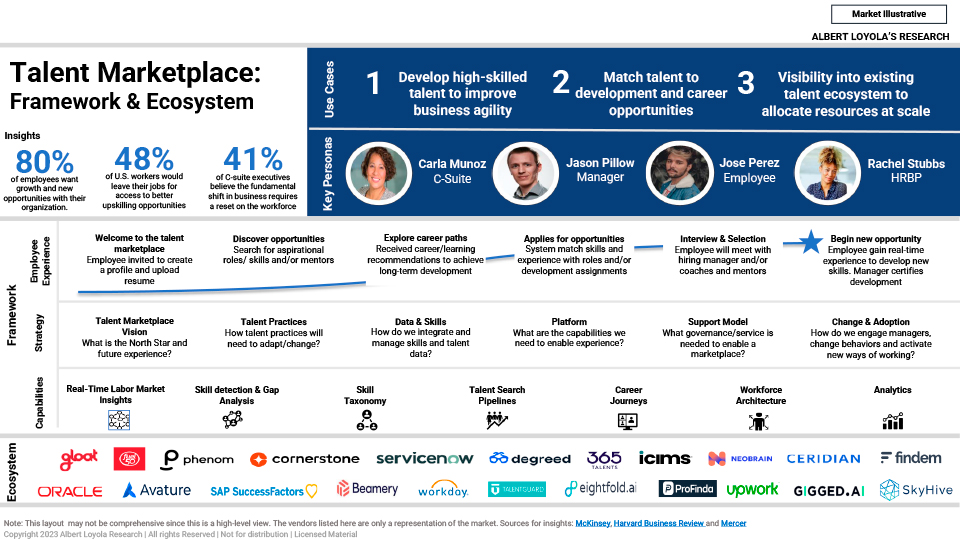
How Many Employee Experience Copilots should an Enterprise have?
Hello, and welcome back to my Blog! This is a question that I get all
Hello, and welcome back to my Blog!
Develop and implement a talent marketplace strategy and match people to development opportunities sounds easy, however, it’s extremely complex since it involves managing several factors such as:
The biggest challenge for a marketplace is not implementing the system/platform and/or services, it’s the ADOPTION of a new CULTURE of MOBILITY. Not every company is ready for it.
If implemented right, companies have real-time visibility of talent and skills. Talent can be redeployed to support growth areas of the business, reduce hiring cost and meet client demands. From the employee perspective, it elevates engagement, retention and makes the employees owners of their careers.
How the Talent marketplace market respond?
Talent marketplace vendors have evolved and matured overtime. In 2022-2023, we have seen more vendors competing in the marketplace ecosystem. Some key acquisitions and partnerships were made to expand offerings and services:
Opportunity
Talent Marketplace One-Pager
The slide below connects personas with experience, strategy and talent marketplace capabilities.
Here are some additional thoughts that I learned working with clients on their internal mobility journeys
I would like to hear your thoughts. What other challenges have you seen implementing a talent marketplace?
Share it with your network:

Albert brings global market research experience to help executives harness intelligent technologies, reinvent HR, re-skilling and employee experience across NAR, APAC, LATAM and EMEA regions.

Hello, and welcome back to my Blog! This is a question that I get all

The Challenge: A Ieading banking organization, with over 200,000 employees, embarked on a strategic investment
